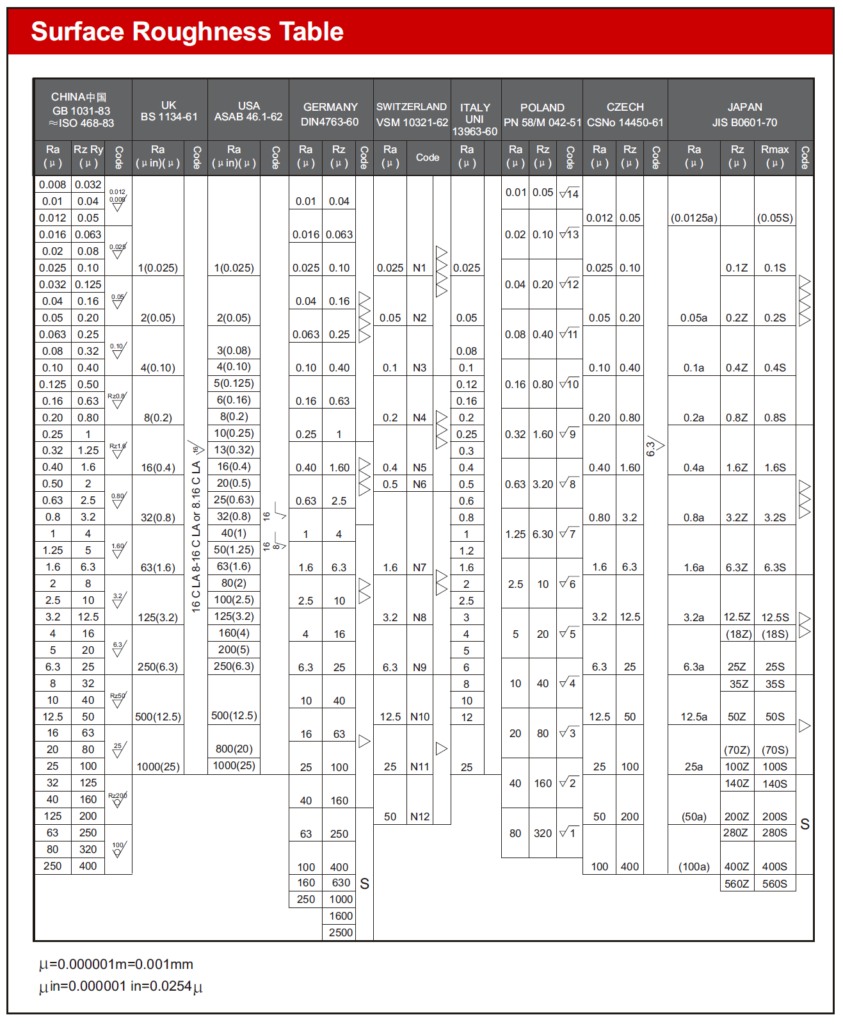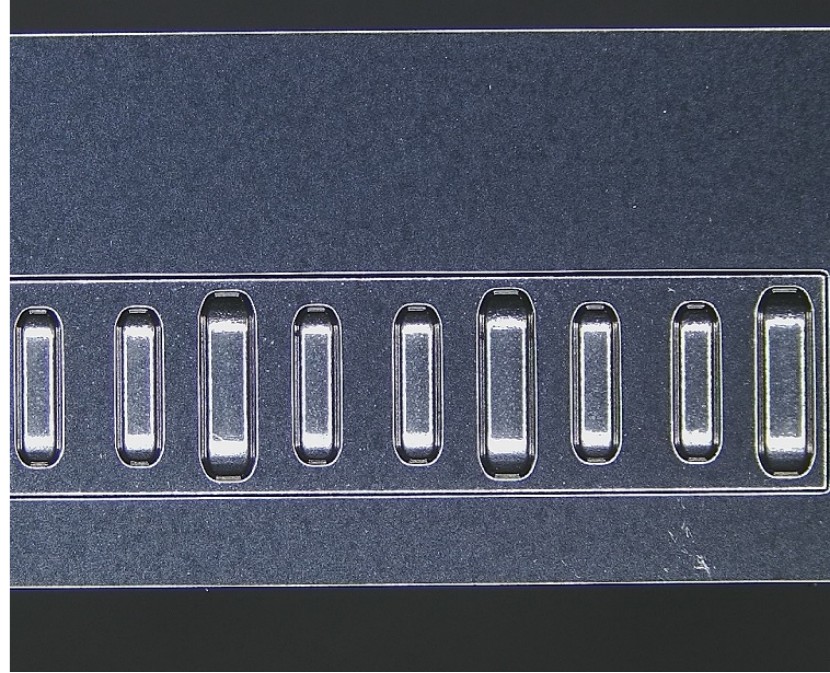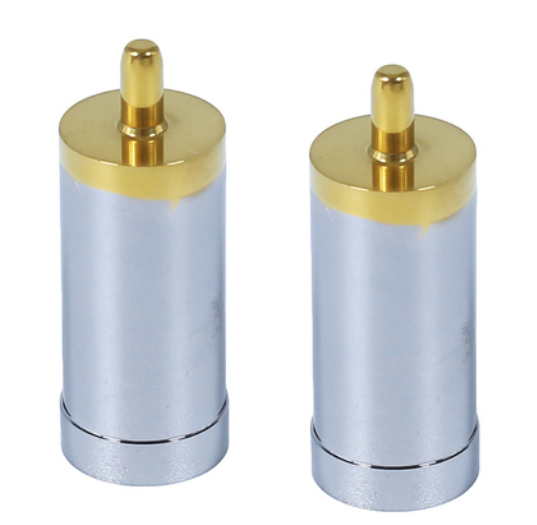In precision manufacturing, particularly in mold design and production, surface roughness is a critical parameter that directly influences performance, longevity, and product quality. Mold components are subject to high-pressure environments, frictional forces, and tight tolerances, making surface conditions an important factor in overall mold functionality.
Surface roughness, often abbreviated as Ra (roughness average), refers to the fine irregularities on a component’s surface. These irregularities are typically the result of machining processes and are measured in microns (µm). The lower the Ra value, the smoother the surface.
Internationally, surface roughness is standardized according to ISO 4287 and ASME B46.1. For mold parts, roughness grades commonly range from Ra 0.1 µm (superfine mirror polish) to Ra 3.2 µm (standard machined finish). Specific surface quality is selected depending on the function of the mold section—such as core, cavity, runner, or ejector pin.

Surface roughness has a significant effect on the durability, release properties, and dimensional accuracy of molds. Poor surface finishes can cause several problems:
Increased Wear and Friction: Rough surfaces increase the contact area and friction between moving parts. Over time, this leads to higher wear on core pins, guide posts, and sliding mechanisms, particularly in high-precision injection molds.
Difficulty in Demolding: In applications like plastic injection or compression molding, rough cavities may hinder part ejection, leading to deformation or damage to finished products.
Product Aesthetics and Defects: The surface of the mold directly affects the surface of the molded part. A high surface roughness can lead to visual imperfections, weld lines, or flow marks on plastic parts, which are unacceptable in consumer products like small kitchen appliances or cosmetic packaging.
Corrosion Susceptibility: Microscopic valleys on rough surfaces can trap moisture and residues, accelerating corrosion, especially in molds made from P20 or H13 tool steels.
Improving mold surface finish is a multi-step process that involves material selection, precision machining, and various surface treatments. Below are some widely used methods:
Modern CNC machining with fine-tipped carbide or PCD tools can achieve surface finishes down to Ra 0.4 µm. For intricate mold geometries, EDM-finished components may require secondary polishing to reduce Ra values below 1.0 µm.

Mechanical polishing remains the most common method to improve surface finish in molds. This includes:
Manual Polishing using diamond paste or abrasive paper, progressing from coarse to fine grades.
Electropolishing, an electrochemical process that smooths the surface by removing microscopic peaks.
Ultrasonic Polishing, which uses high-frequency vibrations to achieve mirror-like finishes, especially on complex or narrow cavities such as those found in precision mold inserts.

Surface engineering can enhance both smoothness and durability:
PVD (Physical Vapor Deposition) Coatings like TiN or CrN can significantly reduce friction and improve wear resistance.
Nitriding or DLC (Diamond-Like Carbon) coatings are often used in high-cavity molds for applications such as multi-cavity plastic parts in the electronics or automotive industry.

These methods not only reduce surface roughness but also prolong tool life, decrease maintenance frequency, and improve mold performance consistency.
During the mold design phase, engineers must determine the required surface roughness for each component based on its function. This includes choosing appropriate mold steels, specifying roughness grades in technical drawings, and aligning surface finish targets with product requirements.
For instance, injection molds for transparent parts—like those used in light guides or food containers—demand extremely low surface roughness (below Ra 0.2 µm) to ensure optical clarity. Conversely, structural parts may allow higher roughness values, reducing polishing time and cost.
Proper documentation of surface finish standards is also critical for quality assurance and repeatable manufacturing outcomes.
Surface roughness is far more than a cosmetic attribute—it plays a central role in mold life, part quality, and production efficiency. From reducing friction and enhancing demolding to meeting stringent aesthetic demands, surface finish parameters must be carefully controlled.
For mold makers and manufacturers working in high-performance sectors such as small kitchen appliance tooling or precision electronics enclosures, understanding and applying the right surface roughness strategies ensures superior end products and reliable production cycles.You can send your product requirements to our email address sales0l@dghongyumold.com, we will contact you within 24 hours and provide the most professional solutions.